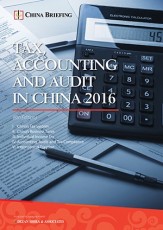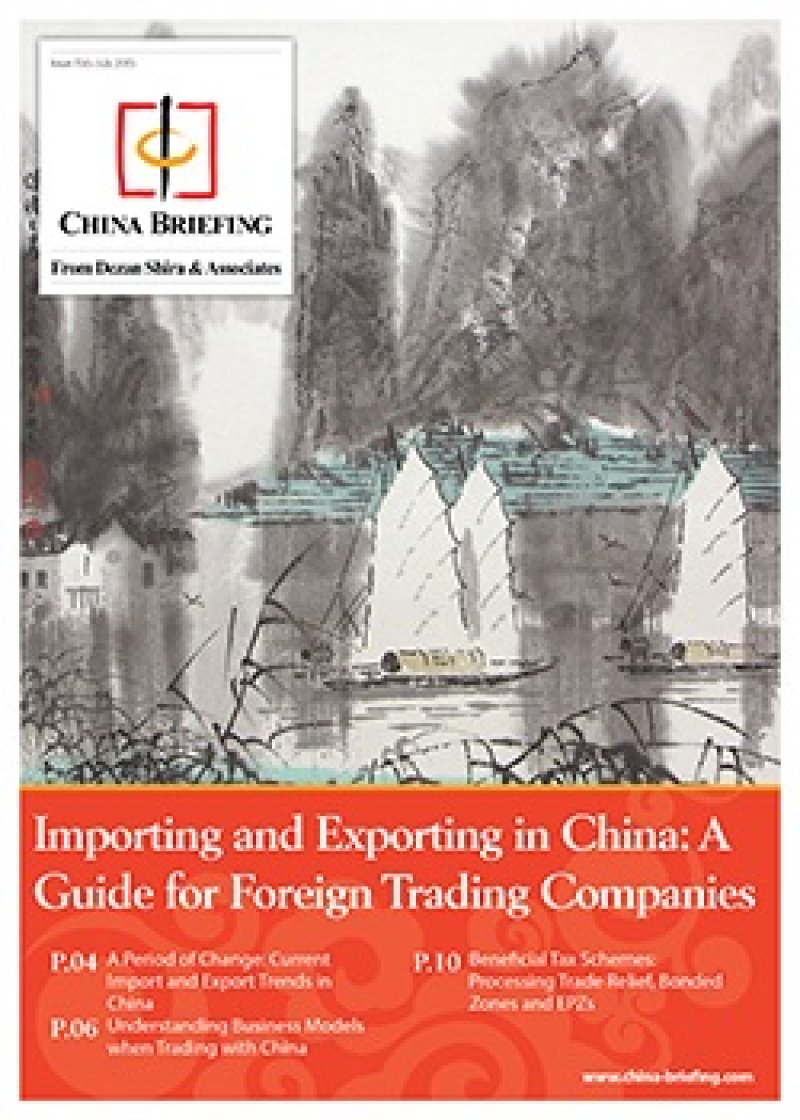China Regulatory Brief: Contemporaneous Transfer Pricing Documentation Rules & 2016 Suggested Salary Levels
China Clarifies its New Transfer Pricing Documentation Rules
On June 29, China’s State Administration of Taxation (SAT) issued the “Announcement [2016] No. 42,” marking the beginning of a new era in China’s transfer pricing contemporaneous documentation administration. The Announcement contains rules governing the filing and management procedures of contemporaneous transfer pricing documentation, and is applicable to the accounting years starting from 2016. One of the major changes in the regulation is that it completely revises the country’s approach to transfer pricing documentation. The Chinese government will now introduce a three-tiered standardized approach to transfer pricing documentation for the first time, including: Master File & Local File, Country-by-Country Report (new), and Special File.
2016 Suggested Salary Levels of Multiple Regions in China Announced
On July 8, 2016, the Bureau of Human Resources & Social Security of Beijing announced 2016’s suggested salary levels for enterprises. It states that the average salary growth baseline for employees is 9 percent, with an upper limit of 15 percent and a lower limit of 4 percent. Other regions, such as Shandong, Shanxi and Inner Mongolia, have also announced suggested salary levels for 2016. Beijing’s lower limit of salary growth has increased from last year’s 3.5 percent to 4 percent. In comparison with 2015, the suggested salary levels of the other different regions mostly leveled off or declined.
Prevention and Control of Occupational Diseases Law Comes Into Effect
A new law on prevention and control of occupational diseases came into effect on July 2, clarifying and streamlining the supervision duties of relevant departments. The decision to revise six laws, including the Energy Saving Law, Water Law, Anti-Flood Law, Environmental Impact Assessment Law and Waterway Law, was made during the 21st meeting of the National People’s Congress Standing Committee.
![]() RELATED: Business Advisory Services from Dezan Shira & Associates
RELATED: Business Advisory Services from Dezan Shira & Associates
MOHRSS to Roll Out the Delayed Retirement Scheme This Year
The Minister of Human Resources and Social Security, Yin Weimin, announced that a delayed retirement scheme will be made publically available this year pending application of relevant procedures. The scheme will be implemented steadily in small steps, with differentiated treatment and with advance notification to ensure clarity. The government has tried to expand employment, particularly for individuals and families who face extreme difficulties.
Tax Method for Highway Toll Charges Obtained After the VAT Reform
Between May 1 and July 31, 2016, for all road and bridge toll charges paid by general taxpayers, the deductible purchase tax amount is to be calculated using the following formulas. The formulas are based on the amount of fees collected as indicated on the toll invoices acquired.
Deductible purchase tax amount of highway toll charges = amount indicated on the toll charge invoice ÷ (1+3%) ×3%.
Deductible purchase tax amount of level one and two highways, bridge and gate toll charges = amount indicated on the toll charge invoice ÷(1+5%)×5%.
The latter taxation method may be adopted for toll charges of the level 1 and 2 highway, and bridge and gate tolls collected prior to the pilot program of general taxpayer collection, which began on April 30, 2016.
|
Asia Briefing Ltd. is a subsidiary of Dezan Shira & Associates. Dezan Shira is a specialist foreign direct investment practice, providing corporate establishment, business advisory, tax advisory and compliance, accounting, payroll, due diligence and financial review services to multinationals investing in China, Hong Kong, India, Vietnam, Singapore and the rest of ASEAN. For further information, please email china@dezshira.com or visit www.dezshira.com. Stay up to date with the latest business and investment trends in Asia by subscribing to our complimentary update service featuring news, commentary and regulatory insight. |

 Tax, Accounting, and Audit in China 2016
Tax, Accounting, and Audit in China 2016
This edition of Tax, Accounting, and Audit in China, updated for 2016, offers a comprehensive overview of the major taxes that foreign investors are likely to encounter when establishing or operating a business in China, as well as other tax-relevant obligations. This concise, detailed, yet pragmatic guide is ideal for CFOs, compliance officers and heads of accounting who must navigate the complex tax and accounting landscape in China in order to effectively manage and strategically plan their China-based operations.
 Annual Audit and Compliance in China 2016
Annual Audit and Compliance in China 2016
In this issue of China Briefing, we provide a comprehensive analysis of the various annual compliance procedures that foreign invested enterprises in China will have to follow, including wholly-foreign owned enterprises, joint ventures, foreign-invested commercial enterprises, and representative offices. We include a step-by-step guide to these procedures, list out the annual compliance timeline, detail the latest changes to China’s standards, and finally explain why China’s audit should be started as early as possible.
Importing and Exporting in China: a Guide for Trading Companies
In this issue of China Briefing, we discuss the latest import and export trends in China, and analyze the ways in which a foreign company in China can properly prepare for the import/export process. With import taxes and duties adding a significant cost burden, we explain how this system works in China, and highlight some of the tax incentives that the Chinese government has put in place to help stimulate trade.
- Previous Article China Regulatory Brief: Consumer Tax Reform and Notice on Employment Subsidy for the Disabled
- Next Article An Introduction to China’s M&A Market











